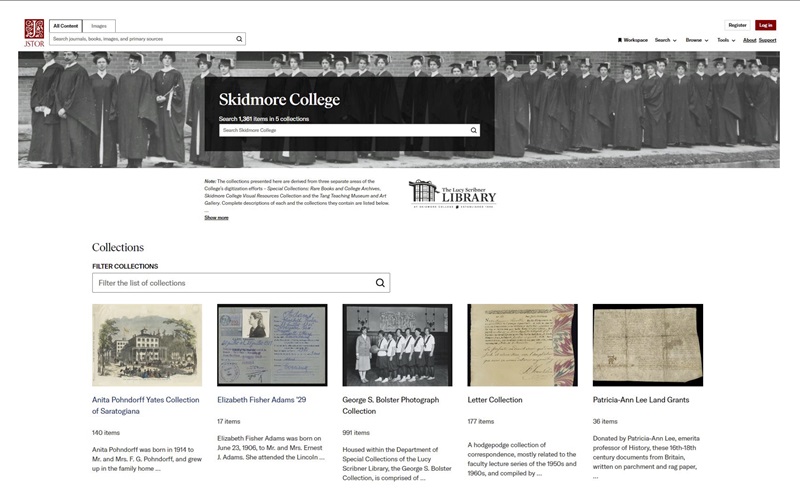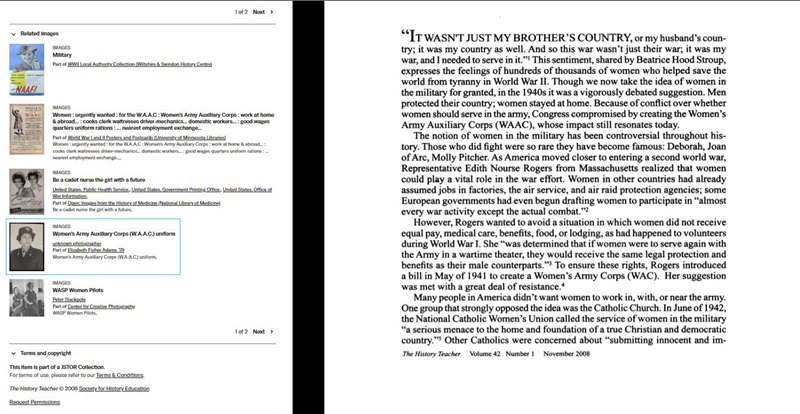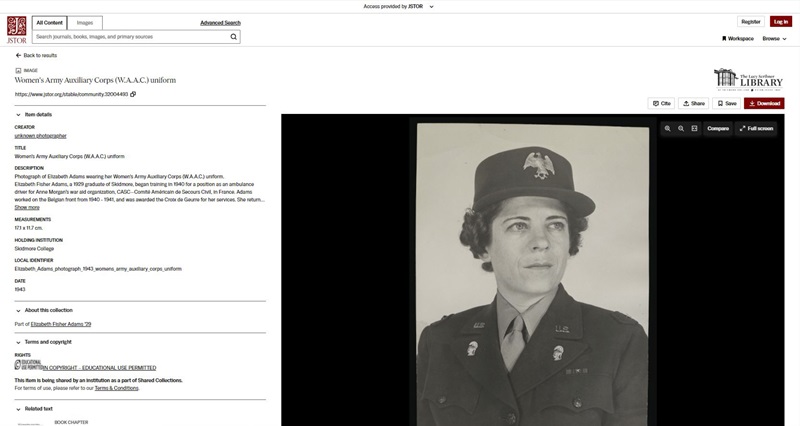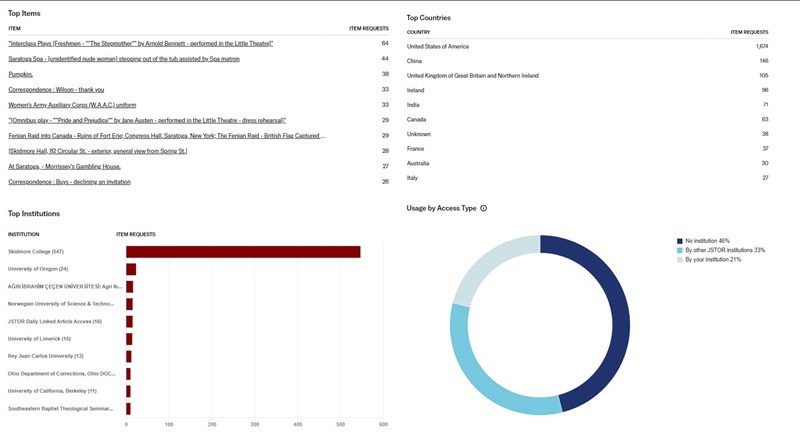Skidmore College Uses Ithaka to Amplify Its Special Collections
Many college and university libraries have amassed special collections and are digitizing these collections to share them more widely. Yet, institutions often struggle to find sustainable solutions for accomplishing this work. Skidmore College is solving this problem with the help of a flexible suite of services for digital collection stewardship from ITHAKA.


Many college and university libraries have amassed special collections that hold great value for students, faculty, and researchers, and a growing number are digitizing these collections to share them more widely and ensure long-term preservation.
Yet, institutions often struggle to find sustainable solutions for accomplishing this work. If students and scholars can’t readily find or access the materials contained in special collections, then these items will seldom be used for teaching or research. And, without a forward-thinking plan for maintaining digital files, the long-term accessibility of these collections is at risk.
Skidmore College is solving this problem with the help of a flexible suite of services for digital collection stewardship from ITHAKA. Built on decades of experience creating trusted library resources like JSTOR and Portico, these services enable institutions to make collections globally discoverable, free of paywalls, and ensure content remains accessible for generations to come. David Seiler, head of digital projects and collections for Skidmore’s Lucy Scribner Library, said, “By hosting public-facing special collections on JSTOR, building and cataloging select collections in JSTOR Forum, and preserving them with Portico, Skidmore is making these materials widely accessible and amplifying their long-term impact.”

Broad accessibility
JSTOR is used at tens of thousands of institutions worldwide as part of the research workflow. “That broad accessibility is very appealing,” Seiler noted.
Skidmore was already using another platform to store and manage the bulk of its digital special collections. However, they’d been using Forum to build and catalog their visual resources and museum assets for some time and were happy with the value of this service. So, when the college became aware of JSTOR’s Open Community Collections pilot program in 2020, campus officials decided to participate.
“It’s another venue for us to offer this work, and another point where someone could find it,” Seiler said.
The college chose to share five special collections on JSTOR that would have a broader appeal beyond the Skidmore campus. These included a collection of nearly 1,000 photos of student life at Skidmore College from the 1920s through the 1950s; a collection of prints featuring the Saratoga, New York area; a collection of letters that include a missive from former New York Governor William Seward discussing the first-ever use of the insanity defense in a criminal trial in the United States; and the Elizabeth Fisher Adams ’29 collection of documents, photos, and letters from this Skidmore alumna’s time in France during World War II, where she served as a member of an ambulance corps.

“Not only does JSTOR have an extensive body of users, but its indexing features give librarians the ability to contextualize the materials in their special collections so that these items can be found in related topic or keyword searches within JSTOR and internet search engines at large,” Seiler said. For instance, someone searching for information on World War II in either JSTOR or Google might find the materials in the Elizabeth Fisher Adams ’29 collection.
Aside from the potential for items in special collections to be discovered more easily, ITHAKA’s preserved collections service offers active preservation of digital materials through Portico.
Portico helps librarians maintain the integrity of their digital assets, ensuring that these items remain available and accessible into the future.
“We don’t have a dedicated archivist on campus,” Seiler said. “So, it falls to my colleagues to preserve what we have here on campus.” Being able to offload that responsibility to JSTOR and Portico takes a lot of work off of librarians’ plates, he noted.
Skidmore is using Portico to preserve more than 300,000 digital objects across a wide range of file types, including .tif, .pdf, .wav, and more, safeguarding the long-term availability of these items.
“I can see they’re being used”
As part of the three-year Open Community Collections pilot program, 310 institutions shared 1,850 special collections on JSTOR at no cost. During this pilot period, people from more than 13,000 unique institutions from around the world, and even more people without an institutional affiliation, accessed the content in these collections, with 43 percent of usage coming from discovery on JSTOR itself and 31 percent from discovery on Google.

The pilot project proved so successful that ITHAKA now offers institutions a menu of paid infrastructure services. For a separate subscription fee, colleges and universities can build their special collections using JSTOR Forum, share their collections with the wider research community on JSTOR, and/or preserve these digitized materials with Portico. Institutions may choose some or all of these services as their needs dictate.
A dashboard allows participating institutions to view how frequently their special collections are being accessed and by whom. Librarians can see which items are being used most often—and by which institutions.
Skidmore’s experience has been so positive that the college not only continues to host those initial five special collections on JSTOR but has added two more, including the complete 18-volume set of Cruikshank , a comic almanac published from 1835 to 1853.
Through mid-February 2024, Skidmore’s special collections on JSTOR generated usage from 74 different countries. While students and faculty at Skidmore are the biggest users, they account for only 20 percent of the collections’ total use.
“I can see that our special collections are being used,” Seiler said. “That means they’re being seen on the platform.”
Preserving digital collections for the long term and making them more easily discoverable aligns with the mission of academic libraries, he added, noting that librarians have a responsibility to disseminate their special collections as broadly as possible.
“It’s about having a commitment as an institution that you’re willing to share these materials as much as you can,” Seiler concluded. “We’ve done the work, and we’ve seen the benefits.”
SPONSORED BY

RELATED
ALREADY A SUBSCRIBER? LOG IN
We are currently offering this content for free. Sign up now to activate your personal profile, where you can save articles for future viewing









Add Comment :-
Comment Policy:
Comment should not be empty !!!